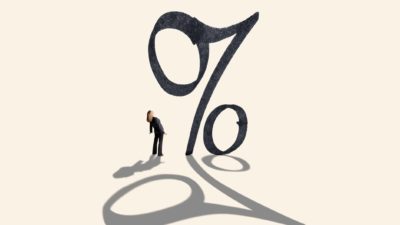Investing in S&P/ASX 200 Index (ASX: XJO) shares is a great source of wealth-building. That translates to the broad market typically moving in a general state of incline over time.
But share markets move in cycles, and purchase prices matter. Under this lens, a stock market crash – while not ideal – opens a window of buying opportunities.
The great investing icon Warren Buffett says it best: "Widespread fear is your friend as an investor because it serves up bargain purchases."
If there were another market crash, here are three of the ASX 200 shares I would go bargain-hunting for.
Wesfarmers Ltd (ASX: WES)
Say the market were to crash, a recession is likely to precede or follow suit.
The diversified retail conglomerate Wesfarmers has a competitive advantage here due to its broad offering of portfolio brands. Many of its companies are in competitive industries with low profit margins but have high market share and equally high revenues.
That's because they are the low-cost provider in many instances, beating the competitors on price and operating margin – highly attractive in a high-inflation world. Bunnings, Kmart, and Priceline Pharmacy are three cases in point here.
But when times are tough, consumers also turn to low-cost providers as their preferred providers. So, if the economy is slow, Wesfarmers' competitive advantage increases.
Goldman Sachs has tipped Bunnings to deliver $2.5 billion to $3 billion in free cash flow for Wesfarmers this year, which will be used to finance its growth ventures in health and lithium.
Wesfarmers touched a record trading high of $71.11 on Wednesday. Any move into the $50-$55 per share range would be an attractive entry point in my books.
CSL Ltd (ASX: CSL)
Global biotechnology giant CSL continues to cement its position as a market leader in various complex disease segments.
The company's technologies are used in laboratories throughout the globe, and its three core units, CSL Behring blood plasma therapy, CSL Vifor iron deficiency and nephrology therapies, and Seqirus for vaccines, are here to stay.
A market crash would make this ASX share really attractive to investors due to the cyclical tailwinds building in its plasma collections and immunoglobulin divisions.
Research conducted by Global Market Insights projects the global immunoglobulin market to grow at 7.7% per year to 2030, reaching US$32 billion by then.
Analysts at UBS agree, forecasting "double-digit earnings growth over the coming years" from this division, according to my Foolish colleague James last week. UBS has a price target of $330 on the CSL share price, 20% upside potential.
If the stock slipped back to $225 per share, the upside potential would increase to 46% at UBS' valuation.
National Australia Bank Ltd (ASX: NAB)
ASX banking shares have rallied in 2024. NAB hasn't missed the boat, up 12% in the past four months. NAB also had a return on equity (ROE) of 12.9% in 2023, the second highest in the banking majors.
The rally has pushed NAB shares toward many analyst price targets. Goldman Sachs and Morgans value NAB at $33 and $30 apiece, respectively, whereas Citi analysts have a $28 valuation.
Despite this, NAB has plenty going for it. It recently announced a number of leadership changes that caught investor attention.
As I write, its dividend of $1.68 per share provides a trailing dividend yield of 4.85%, which would spike sharply in a market crash. A pullback to $25 per share, for instance, would give NAB shareholders a 6.7% yield at that dividend rate.
This characteristic is easy to ignore at the wrong price. That's why, if the market were to suddenly crash, NAB is firmly on my radar.









